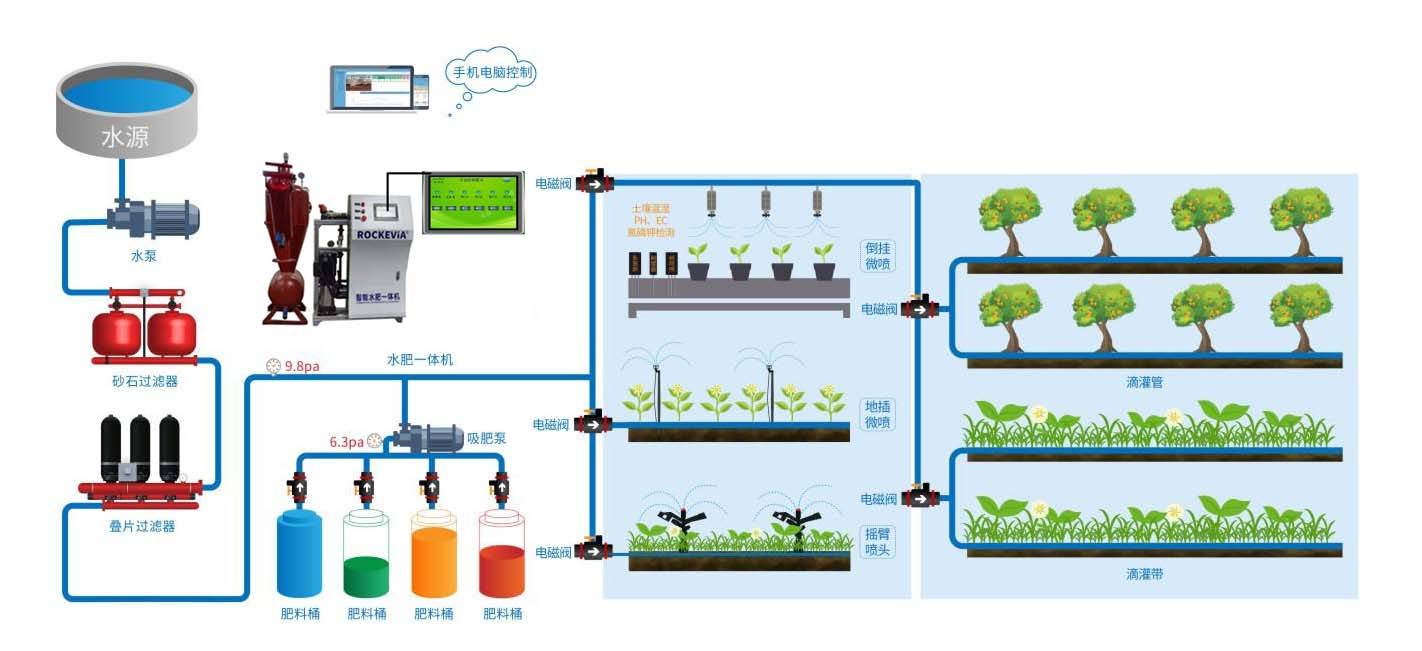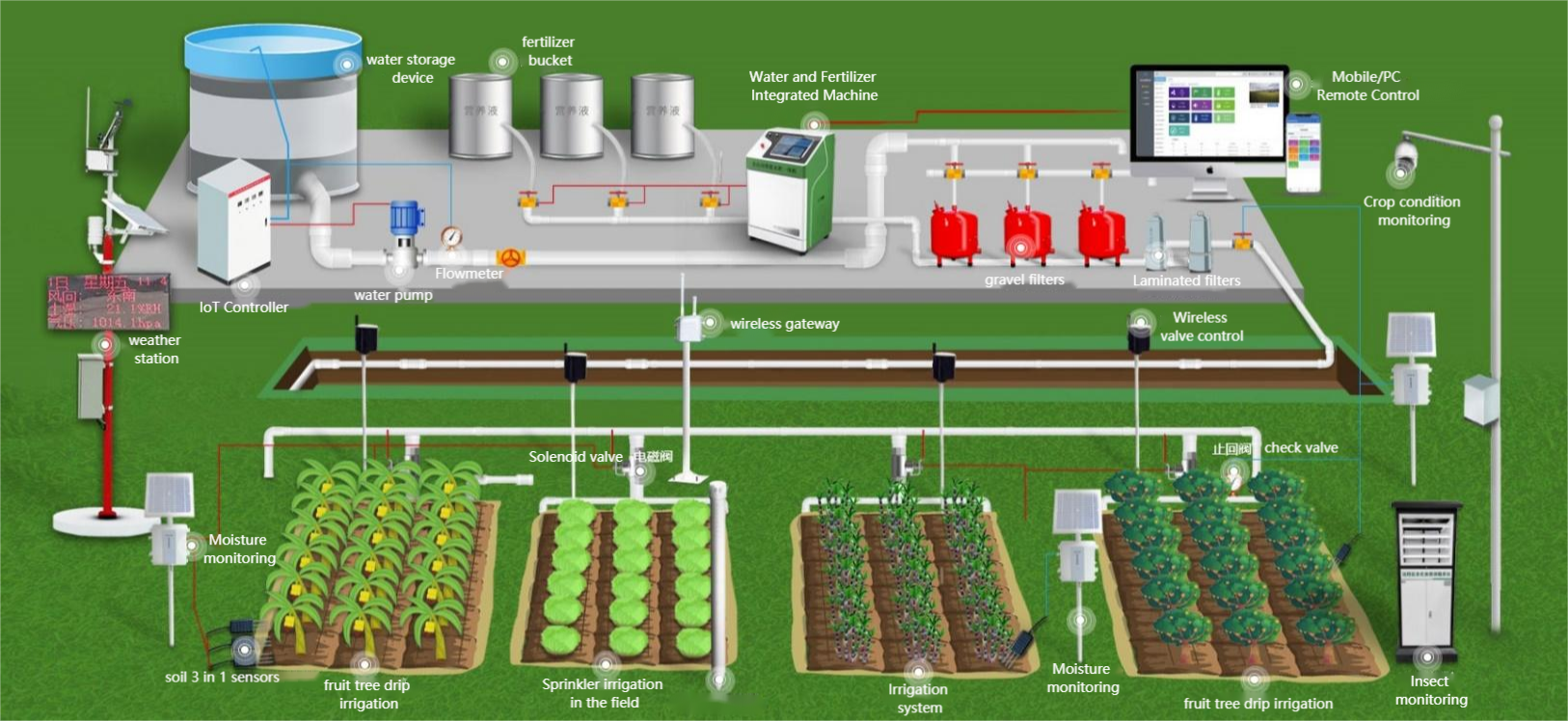

— Blogs —
—Products—
 Consumer hotline +8618073152920
Consumer hotline +8618073152920 WhatsApp:+8615367865107
Address:Room 102, District D, Houhu Industrial Park, Yuelu District, Changsha City, Hunan Province, China
Product knowledge
Time:2022-08-21 11:16:33 Popularity:597
The soil moisture monitoring system plays a crucial role in modern agriculture by providing real-time data on soil conditions, which is vital for optimizing irrigation and enhancing crop growth. By integrating various sensors to measure different environmental parameters, this system enables farmers and agricultural experts to monitor key factors such as soil moisture, temperature, and even atmospheric conditions.
Soil moisture, along with other environmental factors like soil temperature, compactness, and nutrients, is essential for healthy crop growth. Maintaining the right soil moisture levels is critical, as both drought and waterlogging can significantly affect crop health and yield. Monitoring soil moisture helps prevent these extreme conditions and plays an important role in irrigation management and drought monitoring. By understanding soil moisture levels, farmers can optimize water usage, increase efficiency, and reduce waste.
The soil moisture monitoring system is designed to offer continuous, real-time data on the moisture content and temperature of the soil, helping to assess crop health and irrigation needs. Here's a breakdown of its key features:
1. Real-Time Data Collection: The system uses sensors to measure the moisture content of the soil and soil temperature at regular intervals. These sensors provide valuable insights into the current state of the soil, allowing farmers to make informed decisions about irrigation schedules and other necessary adjustments.
2. Wireless Data Transmission: The moisture data collected by the sensors is transmitted to a data collector via 2G, 3G, 4G, or 5G networks. This enables seamless data transmission to remote monitoring platforms, where farmers or agricultural experts can access and analyze the information in real time, even from afar. The system supports cloud-based analysis, making it easier for users to track trends and manage the data effectively.

3. Integration of Multiple Sensors: Beyond measuring soil moisture and temperature, the monitoring system can be expanded to include additional sensors that monitor various environmental factors affecting crop growth. These may include:
- Soil Water Potential: This measures the ability of the soil to retain moisture, helping to assess the water availability for plants.
- Ultraviolet Radiation: Helps to monitor the level of UV radiation, which can impact plant health and growth.
- Light Intensity: Assesses the amount of light reaching the crops, which is critical for photosynthesis.
- Atmospheric Humidity: Measures the moisture in the air, which can influence soil moisture levels and evapotranspiration rates.
- Wind Speed and Direction: Important for monitoring how wind conditions affect soil moisture evaporation.

4. Solar-Powered Operation: The soil moisture monitoring system is powered by solar panels, making it highly sustainable and efficient for long-term field monitoring. Solar energy ensures that the system can function continuously, regardless of weather conditions—whether it's cloudy or sunny. This makes it particularly suitable for use in remote areas where a reliable power supply may not be available.
5. Data Analytics and Decision Support: With the integration of wireless communication technologies, the soil moisture monitoring system is capable of transmitting the collected data to centralized platforms where it can be analyzed. The data can be used to generate actionable insights for improving irrigation practices, optimizing water usage, and enhancing crop yield. Farmers can receive timely alerts when soil moisture levels drop or rise beyond optimal ranges, allowing them to take corrective actions before issues like drought or waterlogging occur.
6. Long-Term Monitoring: Due to the solar-powered nature of the system, it is ideal for long-term deployment in the field, where continuous monitoring of soil conditions is necessary. The data can be stored for historical analysis, helping to identify trends in soil moisture and other environmental parameters over time. This helps farmers make better long-term decisions about their crop management practices.

1. Improved Water Management: By providing accurate and timely information about soil moisture levels, the system enables efficient irrigation practices, reducing water waste and promoting water conservation.
2. Increased Crop Yields: With precise monitoring, farmers can optimize irrigation schedules and make adjustments to improve crop health, leading to increased yields.
3. Cost Savings: Reducing water waste and improving irrigation efficiency can result in significant cost savings in terms of both water usage and energy.
4. Precision Agriculture: The integration of various sensors provides detailed insights into soil and atmospheric conditions, enabling precision agriculture practices that are more sustainable and environmentally friendly.
5. Sustainability: The solar-powered nature of the system ensures that it can be deployed in remote areas without relying on traditional power sources, making it a sustainable solution for monitoring soil conditions.

The soil moisture monitoring system can be applied in a wide range of agricultural contexts, including:
- Precision Irrigation: By providing real-time data on soil moisture, the system allows farmers to optimize irrigation schedules and ensure crops receive the appropriate amount of water.
- Greenhouse Control: In greenhouse farming, maintaining optimal humidity and soil moisture levels is critical. The monitoring system can help manage these factors more effectively.
- Crop Management: The system provides valuable data for crop health monitoring, helping farmers detect issues like drought stress or waterlogging early on, allowing for timely intervention.
- Environmental Monitoring: For large-scale agricultural projects or even environmental conservation efforts, the system can provide critical insights into soil and atmospheric conditions, supporting better land management practices.
- Research and Development: Agricultural researchers can use the data from these systems to study soil behavior, crop-water interactions, and the effects of different environmental conditions on plant growth.
The soil moisture monitoring system developed by NiuBoL offers a comprehensive and reliable solution for monitoring soil conditions in real time. Its ability to measure soil moisture, temperature, and other environmental factors, along with the convenience of solar-powered operation and wireless data transmission, makes it an essential tool for modern agriculture. By providing valuable data to farmers, the system enables more efficient water use, better crop management, and ultimately higher agricultural productivity. Whether for large-scale commercial farms or small-scale organic farms, this monitoring system is poised to play a crucial role in the future of sustainable agriculture.
1.NBL-S-THR Soil Temperature Moisture Sensor datasheet
NBL-S-THR-Soil-temperature-and-moisture-sensors-Instruction-Manual-V4.0.pdf
2. NBL-S-TMC Soil Temperature Moisture EC Sensor datasheet
NBL-S-TMC-Soil-temperature-and-moisture-conductivity-sensor.pdf
3. NBL-S-TM Soil Temperature Moisture Sensor datasheet
NBL-S-TM-Soil-temperature-and-moisture-sensor-Instruction-Manual-4.0.pdf
4. NBL-S-TMCS Soil Temperature, Moisture, Conductivity and Salinity Integrated Sensor
NBL-S-TMCS-Soil-Temperature-Humidity-Conductivity-and-Salinity-Sensor.pdf
Prev:Soil Tension Sensor
Related recommendations
Sensors & Weather Stations Catalog
Agriculture Sensors and Weather Stations Catalog-NiuBoL.pdf
Weather Stations Catalog-NiuBoL.pdf
Related products
 Combined air temperature and relative humidity sensor
Combined air temperature and relative humidity sensor Soil Moisture Temperature sensor for irrigation
Soil Moisture Temperature sensor for irrigation Soil pH sensor RS485 soil Testing instrument soil ph meter for agriculture
Soil pH sensor RS485 soil Testing instrument soil ph meter for agriculture Wind Speed sensor Output Modbus/RS485/Analog/0-5V/4-20mA
Wind Speed sensor Output Modbus/RS485/Analog/0-5V/4-20mA Tipping bucket rain gauge for weather monitoring auto rainfall sensor RS485/Outdoor/stainless steel
Tipping bucket rain gauge for weather monitoring auto rainfall sensor RS485/Outdoor/stainless steel Pyranometer Solar Radiation Sensor 4-20mA/RS485
Pyranometer Solar Radiation Sensor 4-20mA/RS485
Screenshot, WhatsApp to identify the QR code
WhatsApp number:+8615367865107
(Click on WhatsApp to copy and add friends)